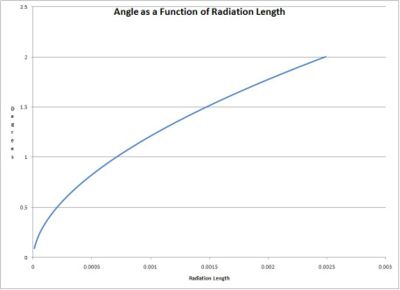Difference between revisions of "Multiple scattering Angle"
Jump to navigation
Jump to search
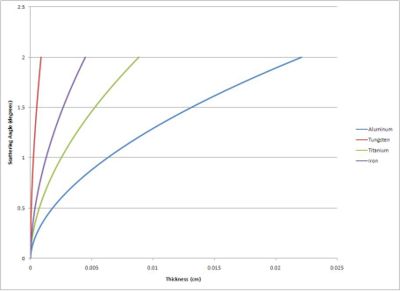
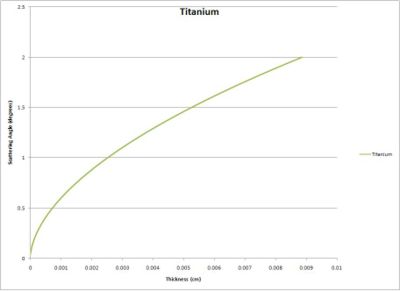
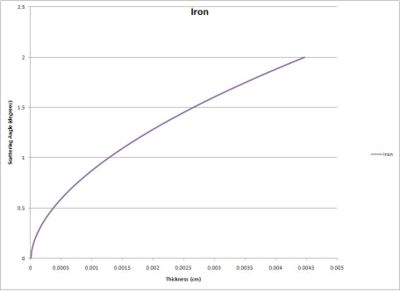
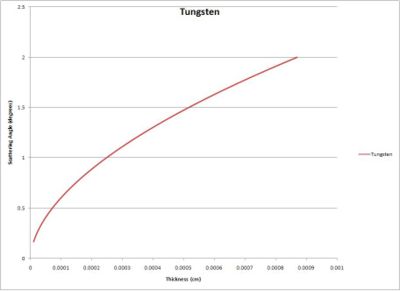
| Line 4: | Line 4: | ||
p = momentum of the incident particle | p = momentum of the incident particle | ||
| + | |||
<math>\beta</math>c = velocity of the incident particle | <math>\beta</math>c = velocity of the incident particle | ||
| + | |||
z = charge number of the incident particle | z = charge number of the incident particle | ||
| + | |||
<math>x/X_{0}</math> = thickness of the scattering medium in radiation lengths | <math>x/X_{0}</math> = thickness of the scattering medium in radiation lengths | ||
Revision as of 16:13, 4 June 2008
Multiple Scattering Angle
p = momentum of the incident particle
c = velocity of the incident particle
z = charge number of the incident particle
= thickness of the scattering medium in radiation lengths
1.Angle as a Function of Radiation Length
2.Graphs of Angle vs. Radiator Thickness for various metals
Scattering Angle as a Function of Thickness




3.Table of Radiator thickness for specific scattering angles
Radiator Thickness given specific Scattering Angles:
| Radiator | 0.2 degrees | 0.3 degrees | 0.4 degrees | 0.5 degrees | 0.6 degrees |
| W | 0.15 microns | 0.3 microns | 0.5 microns | 0.7 microns | 1 micron |
| Fe | 0.7 microns | 1.4 microns | 2.5 microns | 3.6 microns | 5 microns |
| Ti | 1.4 microns | 2.8 microns | 4.8 microns | 7.2 microns | 10 microns |
| Al | 3.5 microns | 7.1 microns | 12 microns | 18 microns | 25 microns |
| Radiation Length | 3.9 E-5 | 8 E-5 | 1.35 E-4 | 2 E-4 | 2.8 E-4 |
